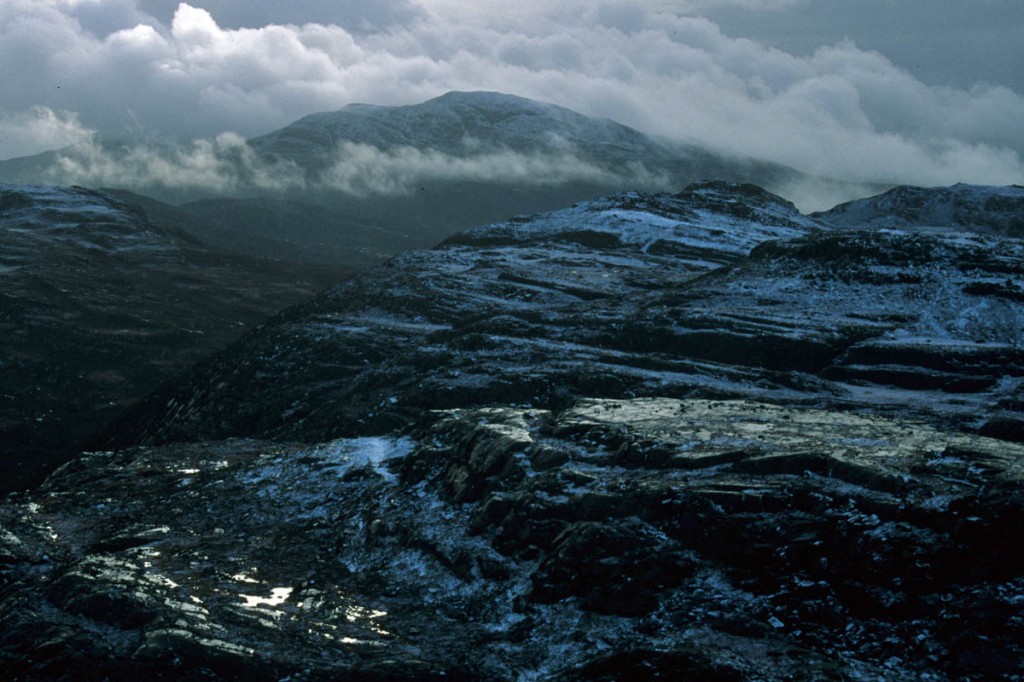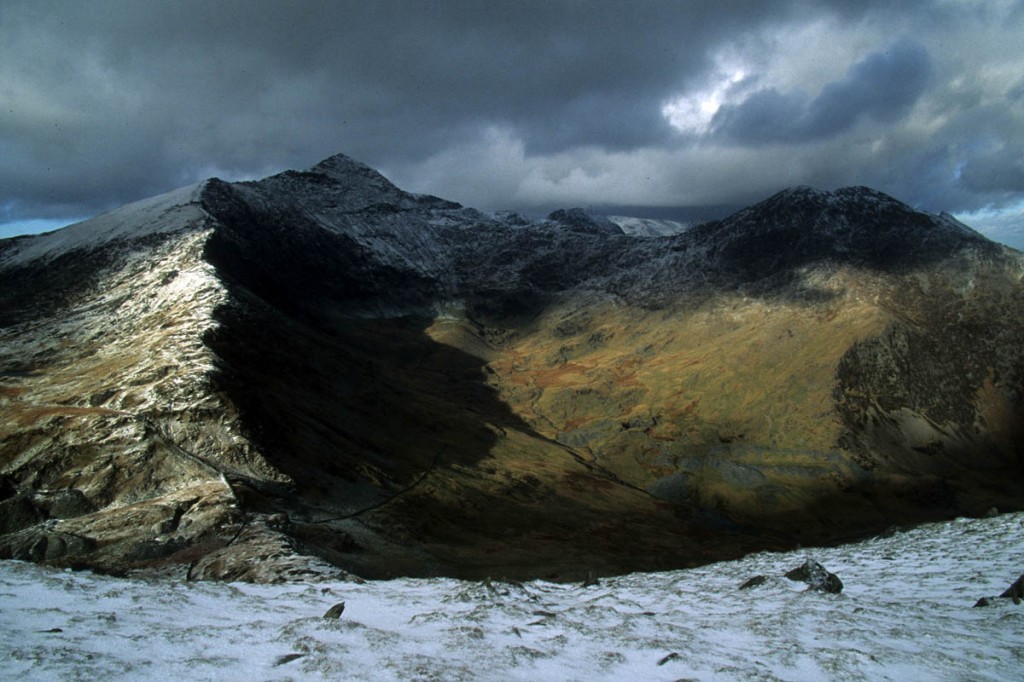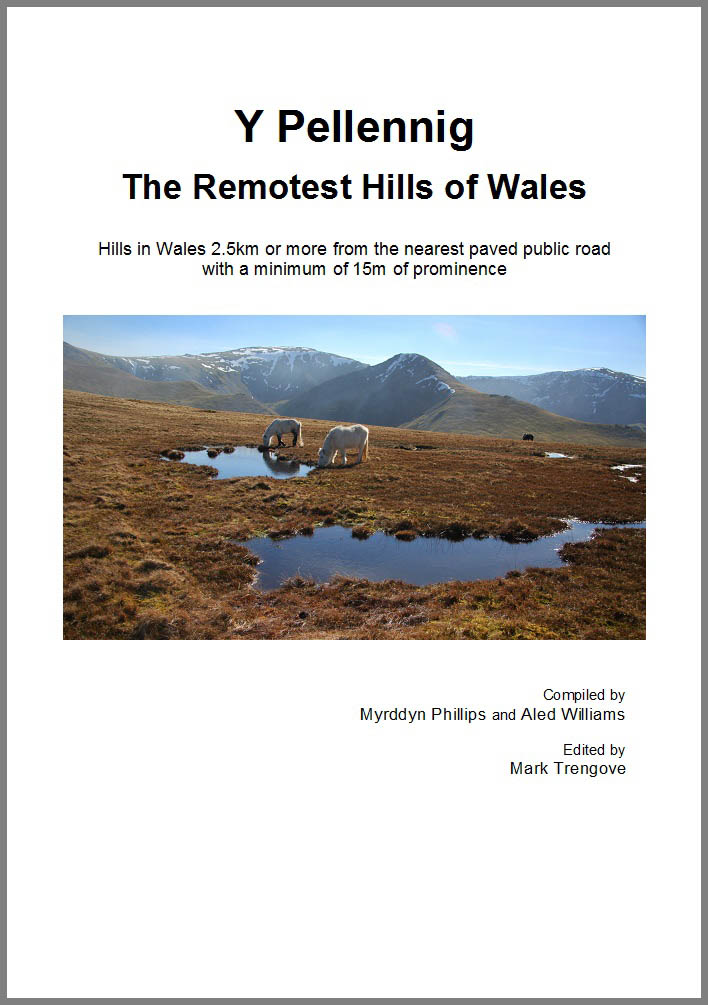There are many reasons for taking a walk to the top of a hill. Solitude must be near the top of the list for many peakbaggers eager to escape the pressures of modern life and commune with nature.
Amateur hill sleuth Myrddyn Phillips and collaborator Aled Williams went in search of the remotest hills in Wales. Here, they detail their results, which are published in an online booklet today.
Seekers of peace and quiet may be disappointed to learn that one of the nation’s remotest peaks is one where you are least likely to find yourself alone on the summit.
Have you ever stood on a mountain top and wondered just how remote it is?
For those lovers of wilderness and solitude who have, there is a recently published listing of Welsh hills that catalogues the Remotest Hills of Wales.
The list has been compiled by Myrddyn Phillips and Aled Williams, who in 2013 published lists of the 400m hills in Wales and England, entitled Y Pedwarau and The Fours respectively. This time the duo have set their sights on something very different and have compiled a list of the 166 hills in the whole of Wales that are at least 2.5km from a paved public road.
The list has been named Y Pellennig: The Remotest Hills of Wales, as the Welsh word pellennig means ‘distant’ or ‘remote’.
The list evolved out of an attempt to pinpoint the most remote spot in mainland Wales from the perspective of distance from the nearest road. This point was identified as being at the heart of the Mynydd Du upland in South Wales.
This soon led the pair to investigate all the hills in Wales that were the farthest from public roads. Mr Phillips said: “The summit of Yr Wyddfa would feel more remote in the early morning of a cold winter’s day than it would on a bright and warm summer’s afternoon, with a horde of tourists disembarking off a newly arrived train.
“Possibly the true meaning of remoteness is personally perceived, and therefore transient, thus making it difficult to quantify.
“A simple, albeit generalised, method of defining remoteness could be based on the distance between the summit of a hill and the nearest paved public road. This at least is easy to ascertain and, as the great majority of hill walks start from the convenience of public roads, it may facilitate a means of determining a critical aspect of remoteness. This is what we have used”.
As the complete list includes 42 island hills, the majority of which are out-of-bounds during the summer due to seabird nesting colonies, or their general inaccessibility, a mainland-only list was also devised that would fulfil a challenge that was feasible for walkers to complete.
Mr Phillips said: “The listing criteria chosen was a minimum distance of 2.5km from a paved public road and 15m of minimum drop between different hills, and this works extremely well as all manner of esoteric and interesting hills are included.”
The qualifying hills are diverse in terms of height, geology and situation. Included, for example, are the airy tops of the dramatic Ynys Weryn (Worm’s Head) headland, the lonely sentinel of Ynys Llanddwyn that forms the south-western tip of Ynys Môn, the delightful Mynydd Enlli and the handful of hills that are found on Ynys Dewi.
Carnedd Uchaf in the high Carneddau also appears and, of course, the highest point in Wales, Yr Wyddfa. A few of the hills will be practically unknown to many hillwalkers, as this publication represents their first appearance within a hill list.
The remotest hill in the whole of Wales also proved to be one of the lowest when measured by elevation, this being West Tump, which is a 17m high wave-battered lump of rock 16.33km out in the Celtic Sea. However, the remotest hill of mainland Wales was found in the great expanse of grassland to the south of the high Mynydd Du peaks in the Brecon Beacons national park.
This is Tyle Garw at 4.875km from the nearest road and at an elevation of 467m. Dr Williams said: “These distances are not great by Scottish standards, but the perception of remoteness is of course relative to a particular country.
“The remote land found in Siberia is on another scale when compared to the Scottish Highlands, and so are the Welsh hills when compared to the Highlands. The booklet will assist walkers in getting far from the madding crowd, visiting the loneliest, wild and scenic spots in Wales”.
Every hill name that appears in the list has been painstakingly researched, and the booklet also publicises some unrecorded hill names taken from research that the duo have undertaken in almost all of the upland areas in Wales.
Dr Williams said: “Some of these unrecorded names were kindly given to us by local farmers, gatherers, shepherds and landowners, and our aim is to safeguard local upland names and to encourage their use over invented names that have no or minimal historical and cultural merit. We hope to publish the entirety of this place-name research in the future, thus ensuring the existence of these local names for future generations to use and enjoy.”
This unique list sets a challenge for the hillwalker who enjoys the wilder side of Wales. The first recorded completer would also become the first person to ascend all of the Welsh remote hills.
The booklet is freely available from the Europeaklist website as an e-booklet and a print-booklet version. A basic version of the list can also be accessed on the v-g.me website and an interactive version is hosted on Haroldstreet, where users can log their progress and download GPS waypoints.





Jon
25 April 2015I think the qualification criteria should include distance from a railway station as well as from a paved road - Yr Wyddfa really isn't very remote, what with the railway and modern eyesore (sorry, cafe building).